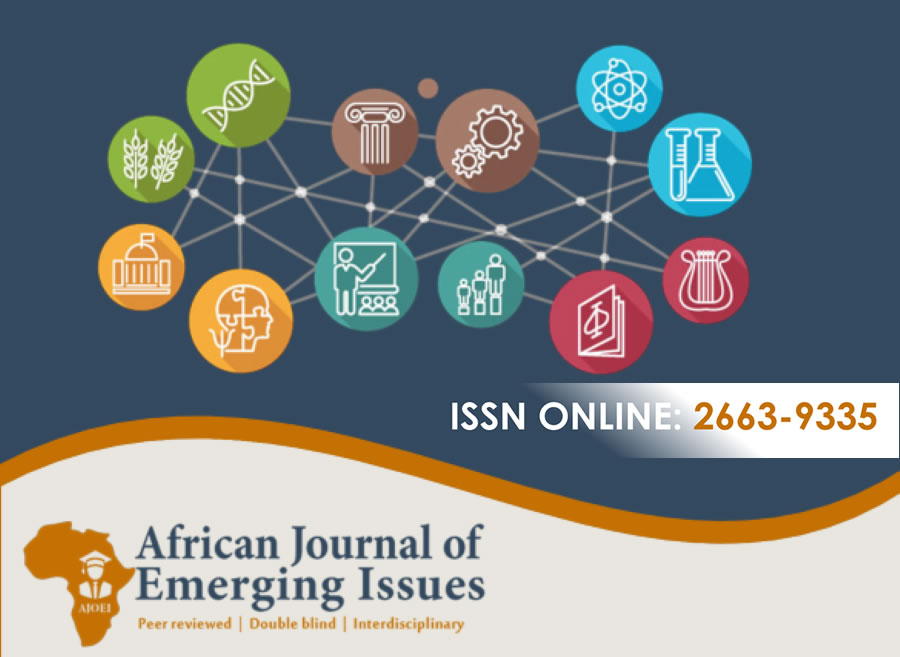INDUSTRY COMPETITIVENESS AND ITS EFFECT ON PERFORMANCE OF SOFT DRINKS MANUFACTURING FIRMS IN KENYA: AN EMPIRICAL ANALYSIS
Abstract
Purpose of Study: The study assessed the extent to which industry competitiveness affects performance of soft drinks manufacturing firms in Kenya.
Problem Statement: Nairobi Bottlers, despite using depots and sub-depots for distribution, continues to face frequent stock-outs and delays. These challenges, linked to weak service timelines, limited product availability, and reduced flexibility, undermine customer satisfaction. As a result, the company has lost part of its market share despite being an affiliate of Coca-Cola East Africa.
Methodology: Target population was 2345 people who include distribution department, whole sellers as well as retailers in the company. The study used stratified sampling technique to select groups of its subjects. Simple random sampling method was then used to select a sample size of 341 respondents. A pilot test was conducted to ensure validity and reliability of the data collection instrument. Data analysis was done using descriptive as well as inferential statistics. This was done via Statistical Package for Social Sciences (SPSS).
Result: Industry competitiveness had a positive and significant influence on the performance of Nairobi Bottlers in Kenya (β =.206, p=.000<.05).
Conclusion: The study concludes that through competition, the company has come up with new products which are capable of providing end users with a greater selection. Industry competitiveness therefore ensures companies come up with products that are attractive and have quality for them to be competitive.
Recommendation: Nairobi bottlers’ management should also train their staff further on impact of distribution logistics on performance of the company. This is to enable them achieve effective means of ensuring industry competitiveness and hence increase further the performance of the company.
Keywords: Industry competitiveness, Firm Performance, Soft Drinks Industry, Resource-Based View Theory, Nairobi Bottlers Company
References
Aira, F., Ondiek, G & Mise, J. (2012). Impact of channel strategy on customer value of Kenyan soft drink companies, Kisumu Kenya, Interdisplinary Journal of contemporary research in business, 3(9); 1259.
Alexandrou, S. E., Panayides, P. M., Tsouknidis, D. A., & Alexandrou, A. E. (2021). Green supply chain management strategy and financial performance in the shipping industry. Maritime Policy & Management, 1-20.
Angira, M. O. (2021). Agility Strategies and Competitve Advantage of Coca-cola Beverages Africa-Kenya (Doctoral dissertation, University of Nairobi).
Awino, Z. (2011). Strategic Management: An Empirical Investigation of Selected Strategy variables on firm’s performance: A study of supply Chain Management in Large Private Manufacturing Firms in Kenya. Prime Journals, Business Administration and Management, 1(1); 9–18.
Bosire, G. (2011). Impact of Outsourcing on Lead time and customer service among supermarkets in Nairobi: Unpublished MBA Project, University of Nairobi.
Bowersox, C., & Cooper (2010). Supply Chain Logistics Management. Boston: McGraw-Hill.
Chikán, A., Czakó, E., Kiss-Dobronyi, B., & Losonci, D. (2022). Firm competitiveness: A general model and a manufacturing application. International Journal of Production Economics, 243, 108316.
Choudhury, A., Behl, A., Sheorey, P. A., & Pal, A. (2021). Digital supply chain to unlock new agility: a TISM approach. Benchmarking: An International Journal.
Coca-Cola Company President Report (2016). Refreshing business, https://coca-colahellenic.com/media/2390/coca-cola-hbc_2015-integrated-annual-report.pdf
Coca-Cola, FEMSA (2016). Accelerating towards excellence by capitalizing with our strategy, https://www.coca-colafemsa.com/reporte-anual-2016/eng/kof-annual-report-2016.pdf
Finkelstein, M. (2004). Analysis of Supply Chain in the Consumer Packaged Goods Industry, Brussels: Zaragoza Logistics Center, a Research Institute Associated With The University Of Zaragoza.
Hassanzadeh, J. F. (2021). Competitiveness development model of manufacturing firms from dynamic capabilities perspectives. Global Business and Economics Review, 24(1), 79-106.
John, M. (2007). Qualitative Analysis: A Dictionary of Public Health, New York: Oxford University Press
John, S. (2018). E-Commerce Trends +Facts, https://endertech.com/blog/e-commerce-trends-facts.
Kariuki, A., & Murimi, C. (2015). Employee empowerment and organizational performance of Tata Chemical Magadi Ltd, Kenya. European Journal of Business and Management, 7(8); 190- 200.
Katz, D., Kahn, R. (1966). The Social Psychology of Organizations. New York: Wiley.
Kothari, C. (2014). Research Methodology: Methods and Techniques. New Delhi: New Age International
Li, H., & Graves, S. (2012). Pricing Decisions during Inter-Generational Product Transition, Production and Operations Management 21(1); 14-28.
Miles, M. (1965). Learning Processes and Outcomes in Human Relations Training: A Clinical Experimental Study, in Schein, E, and Bennis W.
Moons, K., Waeyenbergh, G., & Pintelon, L. (2019). Measuring the logistics performance of internal hospital supply chains–a literature study. Omega, 82, 205-217.
Mugenda, A., & Mugenda, O. (2008). Research Methods. Nairobi: Acts Press.
Obaji, R. (2011). The Effects of Channels of Distribution on Nigerian Product Sales. The International Business and Economics Research Journal, 85-91.
Panya, K. O., & Marendi, P. G. (2021). Effects of reverse logistic practices on the performance of fast moving consumer goods companies in Kenya. The Strategic Journal of Business & Change Management, 8(4), 747-762.
Parfenov, A., Shamina, L., Niu, J., & Yadykin, V. (2021). Transformation of distribution logistics management in the digitalization of the economy. Journal of Open Innovation: Technology, Market, and Complexity, 7(1), 58.
Raihan, A. S., Ali, S. M., Roy, S., Das, M., Kabir, G., & Paul, S. K. (2022). Integrated model for soft drink industry supply chain risk assessment: implications for sustainability in emerging economies. International Journal of Fuzzy Systems, 24(2), 1148-1169.
Sahoo, P. K., Le, V., & Rath, B. N. (2021). The Determinants of Firm Competitiveness: Evidence from the Indian Manufacturing Sector. International Journal of the Economics of Business, 1-21.
Saremi, H., & Mosavi, S. (2014). Management of distribution channels, ISSN: 2250-0138(Online).
Tarigan, Z., Jiputra, J., & Siagian, H. (2021). The effect of supply chain practices on retailer performance with information technology as moderating variable. International Journal of Data and Network Science, 5(1), 47-54.
Wu, P. J., & Yang, C. K. (2021). Sustainable development in aviation logistics: Successful drivers and business strategies. Business Strategy and the Environment, 30(8), 3763-3771.
Xu, Y. (2013). A Review of Distribution Related Problems in Logistics and Supply Chain Research Department of Marketing and Decision Science, San Jose State University. California: Washington Square, San Jose.
Zhang, Y., Ding, Q., & Liu, J. B. (2021). Performance evaluation of emergency logistics capability for public health emergencies: perspective of COVID-19. International Journal of Logistics Research and Applications, 1-14.





